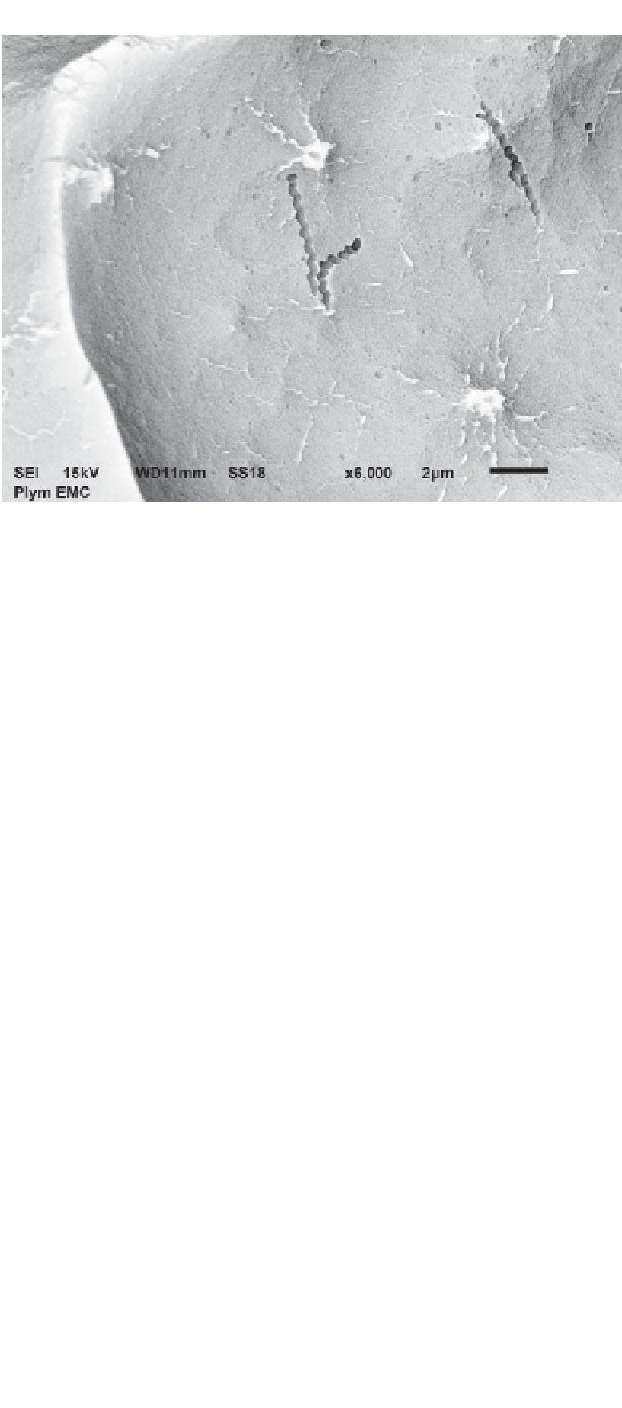Agriculture Reference
In-Depth Information
Fig. 5.2
Scanning electron micrograph of the intestine of Nile tilapia showing the presence of bacterial
cells likely from the Spirochaete phylum. Scale bar
=
2
μ
m. (Source: Ben Eynon.)
these techniques are somewhat limited without the employment of staining techniques for iden-
tification. Such techniques include immunogold labelling which has been used in conjunction
with TEM to identify specific lymphoid cells in the fish intestinal epithelium (Picchietti
et al
.
2009) but to the authors' knowledge such techniques have yet to be utilized to study the gut
microbiota of fish or to assess potential probiotic colonization.
5.5 MICROBIAL ACTIVITY AND FUNCTIONALITY
All of the approaches described in this chapter thus far have focused on microbial abundance.
This is of course an important aspect to consider but it does not identify which members of the
community are most active. One of the common approaches to assess the microbial activity and
potential contribution to the host fish digestive processes has been the assessment of microbial
community digestive enzyme production. More specifically, the abundance of bacteria display-
ing digestive enzyme activity are enumerated and isolated on specific media; for example, for
amylase-, cellulase- and protease-producing bacteria, gut homogenates have been spread onto
starch agar, carboxymethylcellulose (CMC) agar and peptone-gelatin agar plates, respectively
(Ray
et al
. 2010; Pedrotti
et al
. 2013). Such an approach can provide important information
on the potential contribution of cultivable microbes on the digestive activities of fish. A lim-
ited number of studies have quantified the levels of short-chain fatty acids (SCFAs) in the GI
tract of fish. SCFAs, such as butyric acid, acetic acid and propanoic acid, are metabolic end
products of microbial fermentation of fibre. Therefore the types of SCFAs present, and their
levels, can potentially provide information on the types of bacterial groups present as well the
activity of the community in the GI tract. Although this approach is widely used in the study of



















Search WWH ::

Custom Search